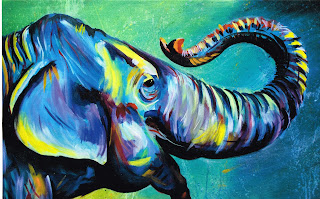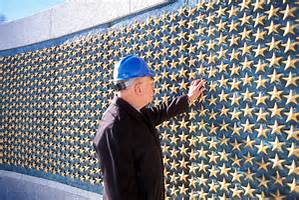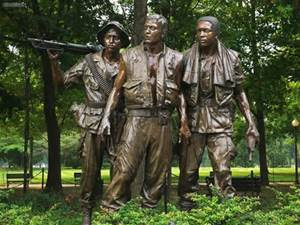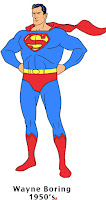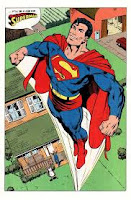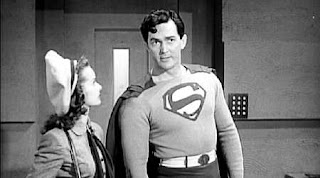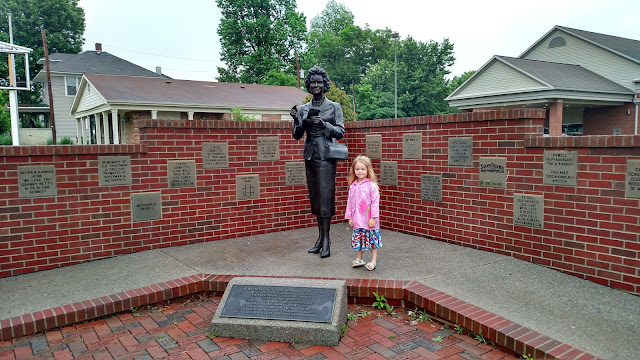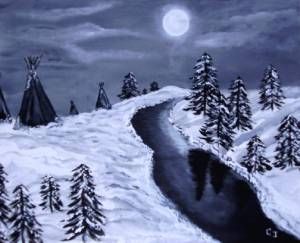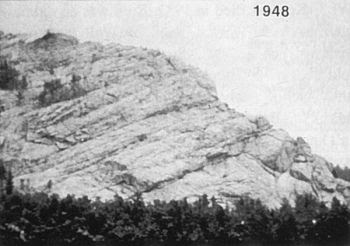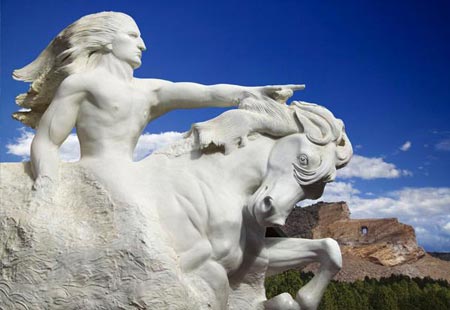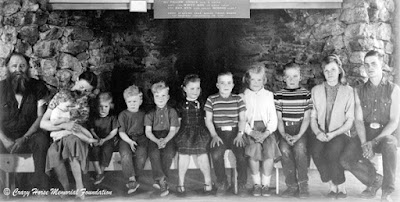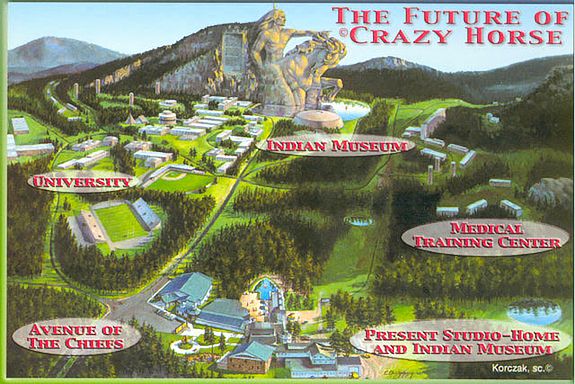THE WASHINGTON MALL: Part 1 |
Market for Elephants-None- winters are too cold, no grazing range
due to heavy urbanization- Zoo is already full.
Date of My Visit January 2, 2016
I am going to describe one part of a major city, the National Mall in Washington D.C. What constitutes the Mall seems to vary according to sources. I am going from the Washington Monument out to the Lincoln Memorial and around the Tidal Basin.
Washington Monument
While the White House can be called the center of Washington,
from any distance the Washington Monument dominates the scene. This is deliberate; by civic regulation no building can be taller than it.
In 1833 a private group The Washington National Monument Society was organized to build a monument to our first president. To insure the monument would be a national project contributions were limited to $1 per year per person. Rather like current political candidates brag about getting small donations from individuals rather than depending on corporate money.
That plan didn’t work well and unlimited donations were allowed. It took to 1847 to raise $78,000 and the society began accepting submissions. They chose the work of Robert Mills, who not only designed the Treasury Building, but an earlier memorial to Washington in Baltimore. His vision was of a 200 foot diameter rotunda, with a 600 foot tall obelisk rising in the middle. Thirty columns were to surround this, with a circle of heroic statues creating a National Pantheon, a listing of national heroes. Congress gave them a 37 acre site chosen after soil tests to be sure the ground could bear the weight.
On July 4, 1848 the corner stone of 24,500 lbs. of white marble from Maryland was laid. Building commenced with a complex pulley system to move each block from the Washington Navel Yard. However in 1854 the Monument Society went bankrupt. The state of Alabama donated a stone
and the society invited any state, municipality, and association to donate blocks. Later the offer was extended to foreign governments. In 1854 building was interrupted by the stresses leading to the Civil War with the obelisk only a third completed.
In 1876, the centennial of the United States, Congress took over. The Army Corp of Engineers performed a new study of the earth showing the foundation for the obelisk needed reinforcement, and it would have to be shortened. The remainders of Mills’ plans were eliminated for design, engineering, and funding reasons. The Washington Monument as we see it today was dedicated in 1885 one day before Washington’s Birthday, which was on a Sunday that year. It is just 45 ft. short of the original plans and was the tallest manmade structure in the world at that time.
To enter the visitor center at the base and go up the shaft, everyone no matter how young needs a free ticket, which can be obtained on the internet or at the booth. The visitor’s center is excellent. I suggest taking the elevator to the top look out the tiny windows over the city (I was disappointed that there were no signs of Art Buchwald’s office there) and then walk down the iron stair well to look at the 193 commemorative stones. Anyone with leg problems or small children will want to avoid this.
There are two things that one has to look at the memorial when the sun is at different angles to see. First because they had to change quarries three times there are three slightly different bands of color. Second the top is a pyramid of aluminum designed to protect against lighting.
THE WORLD WAR II MEMORIAL
It’s hard to understand why it took so long start organizing a truly national World War II Memorial. It was not until 1987 a bill was introduced by Representative Marcy Kaptur to have the American Battle Monuments Commission establish a memorial in Washington. D.C. The bill had to be introduced three more times before passing both Houses.
Finally in 1994 Bill Clinton, the second president to not remember World War II, signed a bill appointing advisors to help the ABMC. The co- chairs were Senator Bob Dole a WWII veteran and holder of two Purple Hearts and the Bronze Star and Frederick W. Smith, President of FedEx and a Marine Corps officer who earned a Silver Star, Bronze Star, and two Purple Hearts in Vietnam. Millions of dollars were raised by a direct mail fundraising effort much from veterans and veterans’ organizations. The Federal Government provided $16 million.
Out of 400 submissions Friedrich St. Florian’s was accepted and the site was chosen to incorporate the views of the Washington Monument, the

It was opened to the public in April 29, 2004. In contrast to the plain Washington Monument, this memorial has numerous symbols and inscriptions. The main entrance way to the central plaza has bas-reliefs, one side representing the Atlantic, the other the Pacific.
Around the plaza are 56 pillars representing the 48 American states,plus the dis tricts and territories under the control of the U.S. during the war. This is to honor service men from places like Hawaii, Alaska and Guam
Two arched entrance ways on opposite sides of the plaza are labeled the Atlantic and Pacific doorways. On the floor of each door way is a map of this theater. On the wall under the pillars are quotes, once again one side concerning the Pacific theater, the other the Atlantic.
Behind the fountain is the freedom wall with 4048 gold stars. Each star represents 100 Americans who died in World War II. In World War 1 the custom developed of hanging a blue star on homes to mark each resident
who was in the military. If they died a gold star replaced it. President Wilson formalized the phrase Gold Star Mother in a speech and the use of a gold star especially on a mourning band has become a part of military symbolism ever since in America.
I was impressed bythe memorial as a work of art. After I stopped at the Information center and used the computer kiosk to look up my father and one uncle’s military record, I went back again to get the full emotional effect.
The visitors here were an older group and respectful.
56 Signers of the Declaration of Independence:
From the World War II memorial go up to Constitution Ave and turn left. After a little while there will be a paved path, leading into the forest called Constitutional Gardens. On a tiny island is a flat stone memorial to the signers of the Declaration of Independence. It’s a semi-circle of 13 stones with the names of each of the original colonies and the names and home city of each signer.
The second Continental Congress consisted of delegations sent by the legislatures of each colony and met in Philadelphia. Their purpose was to organize the colonies’ relations with the Royal Government in London. In June of 1776 Richard Henry Lee of Virginia submitted a measure to declare independence from Britain. The unanimous vote approving it was held in July 1776, when the U.S. celebrates, but the formal signing was August 2nd.
North Carolina, my home state, sent a delegation of three.
William Hooper an attorney in Wilmington had campaigned for independence before he was elected to Congress. He was away on business when the vote for independence was taken, but signed in August. He left congress in 1777 but after the British destroyed his two homes in
John Penn a mostly self-educated lawyer voted for independence and signed on August 2nd. He had been a strong advocate of independence and after leaving congress in 1780 served on the war board in North Carolina organizing the defense against Lord Cornwallis during the southern campaign
 Joseph Hewes, a merchant of Edenton, still felt it was premature to declare independence in July 1776. However after a final speech by John Adams he is quoted as raising his hands and crying “’It is done! And I will abide by it” making the North Carolina delegation unanimous. He served on the marine commission and has been called the first secretary of the American navy. He eventually died in Philadelphia partly of over work.
Joseph Hewes, a merchant of Edenton, still felt it was premature to declare independence in July 1776. However after a final speech by John Adams he is quoted as raising his hands and crying “’It is done! And I will abide by it” making the North Carolina delegation unanimous. He served on the marine commission and has been called the first secretary of the American navy. He eventually died in Philadelphia partly of over work.
These were not perfect men, no. But the more you look at it when they pledged “Life, Fortune, and Sacred Honor” they meant it.
Go back to Constitution Ave. and turn left again. Across the avenue in front of the National Academies of Science you will find a charming quiet spot where the Albert Einstein Memorial offers a rest stop.
About 1905 just after finishing his doctorate in the University of Zurich he published three papers which started three new fields of physics. His work was so widely studied he became famous outside the academic world, artists and poets attempted to incorporate his insights in their work.
He became interest in the international anti-war movement but spent most of time on science becoming director of the Kaiser Wilhelm Physical Institute in Berlin in 1914 and receiving a Nobel Prize in 1921. However with the rise of the Nazi movement he moved to the United States where in 1933 he received a lifetime appointment as professor of mathematics at the Institute of Advanced Studies in Princeton, New Jersey.
As one of the most famous scientist in the world in 1939 his letter to President Roosevelt on the military uses of atomic research helped spark the Manhattan Project during World War II.
He continued his research until his death in 1944. How important was his work? The last few years of his life after he completed his writing, usually equations, on a large chalk board they were removed and sprayed to preserve his handwriting.
The memorial is under a carefully planned holly and elm grove at the south west corner of the Academy building. The bronze Einstein is 21 feet tall and weighs 7000 lbs. It was cast in 19 pieces and took a crew of 25 men to assemble. He sits on a bench of white granite.
The effect is that of a grandfatherly looking man looking from a paper with
The sculptor Robert Berks is sometime referred to as a bubble gum sculptor because of his odd effects in bronze. His noted sculptures include the Kennedy sculpture in the Kennedy Center, the bust of Ronald Regan in his presidential library, and a memorial to Fred Rogers of the television show Mr. Rodgers’ Neighborhood.
As I said it’s a place well engineered for quiet despite the nearby traffic. The statue is popular with children to climb on and sit in the great man’s lap. I doubt he minds.
I see him sitting on his window seat in Princeton looking out at the Yale campus. I wonder what it is like trying to combine time and space in a single understandable vision.
The Vietnam Veterans Memorial
This particular Memorial actually consists of three pieces the Memorial Wall, the Three Soldiers statute, and the Vietnam Women’s Memorial.
The Memorial Wall is best approached in whichever way the foot traffic is running usually from the Lincoln Memorial side.
The giant wall of black marble has wings aimed toward the Lincoln and Washington memorials to tie it to American history. Upon it is engraved the names of the men and women who were killed, or are still missing in the Vietnam War. The names are listed in the order they are believed to have died or were declared missing. They start in the center and proceed to the right end, and then start again at the left end back to the center.
| Taking a Rubbing of a Name |
If that’s too confusing the unique thing about this memorial is while there are rangers giving tours, there are also usually volunteers, veterans themselves, to help find a name. When I came by this year a volunteer was making rubbings of names.
The monument was financed by donations by over 275,100 individuals, as well as corporations. The founder of the Vietnam Veterans Memorial fund Jan Scruggs reported that “Our memorial had to be paid for by private contributions…by people whose principle reward would know they had honored those whom the nation managed to ignore.” Ultimately they raised over $8.4 million and in 1980 the memorial fund was granted two acres in Constitution gardens.
A national design contest was held with submissions submitted anonymously and examined by a panel of experts. When the winner was announced controversy broke. The winner was Maya Lin a first generation Chinese American and her design for the memorial wall was very unconventional in a city of statues.
I am ashamed to say that part of this may have been from anti-Asian prejudice, especially among those that assumed she was Vietnamese. Looking at her submission sketches one person, not on the jury, referred to it as a ‘wound.’ Putting the wall in the earth suggested to him it was being hidden out of shame.
In her submission Lin said the idea was that one was to descend into a private space blocked from outside noise. The names on the wall have no separation by rank, sex, etc. One starts at the middle following the deaths chronologically then, make a circle and return to follow to the end of the war.
Since the memorial was finished in 1982 it has become one of the most popular pieces of public art in the capital.
The reflection of visitor’s faces on the black polished granite with the engraved names suggests to me the separation of the living and the dead. Lin’s plan achieved its goal of solemnity making it a shrine for those seeking contract with lost friends and loved ones. Numerous tributes and gifts are left at the wall. Each is collected and stored by the Park Ranger service in anticipation of building a museum.
The display of names, in the words of Jan Scruggs, “makes people feel the price of war… has to be paid in human lives.”
It was decided before wall was actually started to have a statue of warriors with a flagpole added. This was to answer criticisms of the Memorial that it did not properly honor those who served in Vietnam but just gave a place to grieve for the dead. On Nov 11th 1984 the Three Soldiers Statues was dedicated. Ms. Lin refused to attend considering the addition to her design unnecessary; “a coup” by her critics.
The sculptor Frederick Hart deliberately made the figures young in keeping with the age of most troops. The center figure is supposed to be white and is carrying equipment consistent with a marine of that period. The figure on the left is Hispanic, the one on the right Negro, each carrying material that an army soldier would have.
To quote Hart “I see the wall as a kind of ocean, a sea of sacrifice…in the sweep of names. I place these figures upon the shore of the sea, gazing upon it, standing vigil before it.”
The Vietnam Women’s Memorial was dedicated on Nov 11, 1993. Funding was raised by another non-profit the Vietnam Women’s Memorial Fund that was incorporated in 1984 the year the Three Soldiers Statue was dedicated.
The funds goal was “to promote the healing of Vietnam women veterans through the placement of the Vietnam Women’s Memorial on the grounds of the Vietnam Veterans Memorial.” Glenna Goodacre, designer of the Sacagawea dollar, was chosen as the sculptor.
They estimate about 11,000 women served in-country during the Vietnam War. Many of them were nurses; all were non-combat personnel, who, because of the nature of guerrilla warfare, were in combat situations. They got shot at.
At the dedication Ms. Goodacre said this memorial was to freeze a moment in time. One woman is cradling or perhaps more accurately elevating a wounded man. The other woman is staring into the sky, probably looking for a medivac helicopter. She has a hand on the other’s shoulder comforting her. The man’s face is partly covered to make him more universal. For the same reason there are no ranks or unit badges.
Discussion of a national monument to Lincoln started not long after the end of the civil war. In 1867 Congress incorporated a commission to build a monument but it failed due to lack of subscriptions.
Five bills were introduced 1901, 1902, and 1908 to start a new commission but failed due to conflicts within the Republican party and arguments over the best location.
Finally the sixth bill passed and the Memorial Commission met in 1911 with President William Taft as its head. By 1913 Congress approved the commission’s plans and choice of location and allocated $300,000 to start.
The final location was on the landfill in West Potomac Park in a line with
the Capital building and the Washington Monument. It started with a beautiful view of the Potomac surrounded by open land. Now it is in line with Memorial Bridge, that leads to Arlington Cemetery, and is half circled by a busy multi lane highway.
The Memorial is highly invested with symbolism. The steps to the main entrance of the Parthenon like building can invest one's approach with a certain solemnity. For those unable to climb up or down- there is an elevator on the left side.
The building is made from Yule marble from Colorado. There are 32 columns representing the number of states at the time of Lincoln’s death. Above each column is engraved the name of one of the 32 state and above that the names of the 48 states that existed when the Memorial was dedicated. The roof is decorated with symbols of unity. The memorial was designed by architect Henry Bacon.
Inside on the south wall is engraved the Gettysburg Address under a mural painted by Jules Guerin showing the angel of truth freeing slaves. On the north wall is a Guerin mural showing the Unity of North and South and a quote from his second inaugural address.
The seated 19 foot statue is lighted by an adjustable artificial lighting
system making it possible to view the statue at night. Designed by sculptor Daniel Chester French the statue shows Lincoln as a tired man seemingly bearing a great burden. On a quiet day the memorial can feel like a sacred space dedicated the president. An interpretation of what the burden is he carries has changed over time.
The commencement speeches on May, 30, 1922 were mostly about the pain of Americans killing Americans and the burden of reunification. Attending were 78-year-old Robert Todd Lincoln and a handful of both Confederate and Union veterans. The only African-American invited was Robert Moton head of the Tuskegee Institute.
However in 1939 Marian Anderson a famous African-American opera singer, refused to perform before a segregated audience at a Daughter’s of the American Revolution meeting. She held an open air concert on steps of the Memorial. The filmed footage circulated the world making the memorial a symbol of equality and democracy.
In August 1963, after several years of planning by different leaders, a poor people’s march on Washington publicizing the need for economic and civil rights took place. Dr. Martin Luther King Jr., one of the organizers, gave his now famous “I Have A Dream” speech on the steps.
Arranging with the National Park service to give speeches and display flags is common. The day of my most recent visit I found a group of young men circulating a petition to outlaw Wahhabism. This is a religious movement or branch of Sunni Islam practiced in Saudi Arabia. An interesting case of
using two of the rights guaranteed by the First Amendment, the freedom to assemble, and freedom to petition, to interfere in another’s right to practice a third, the freedom of religion.
Take a few minutes to let a master film maker Frank Capra explain this secular religion effect in a clip from Mr. Smith Goes to Washington
https://www.youtube.com/watch?v=cqbl-olEMrY
